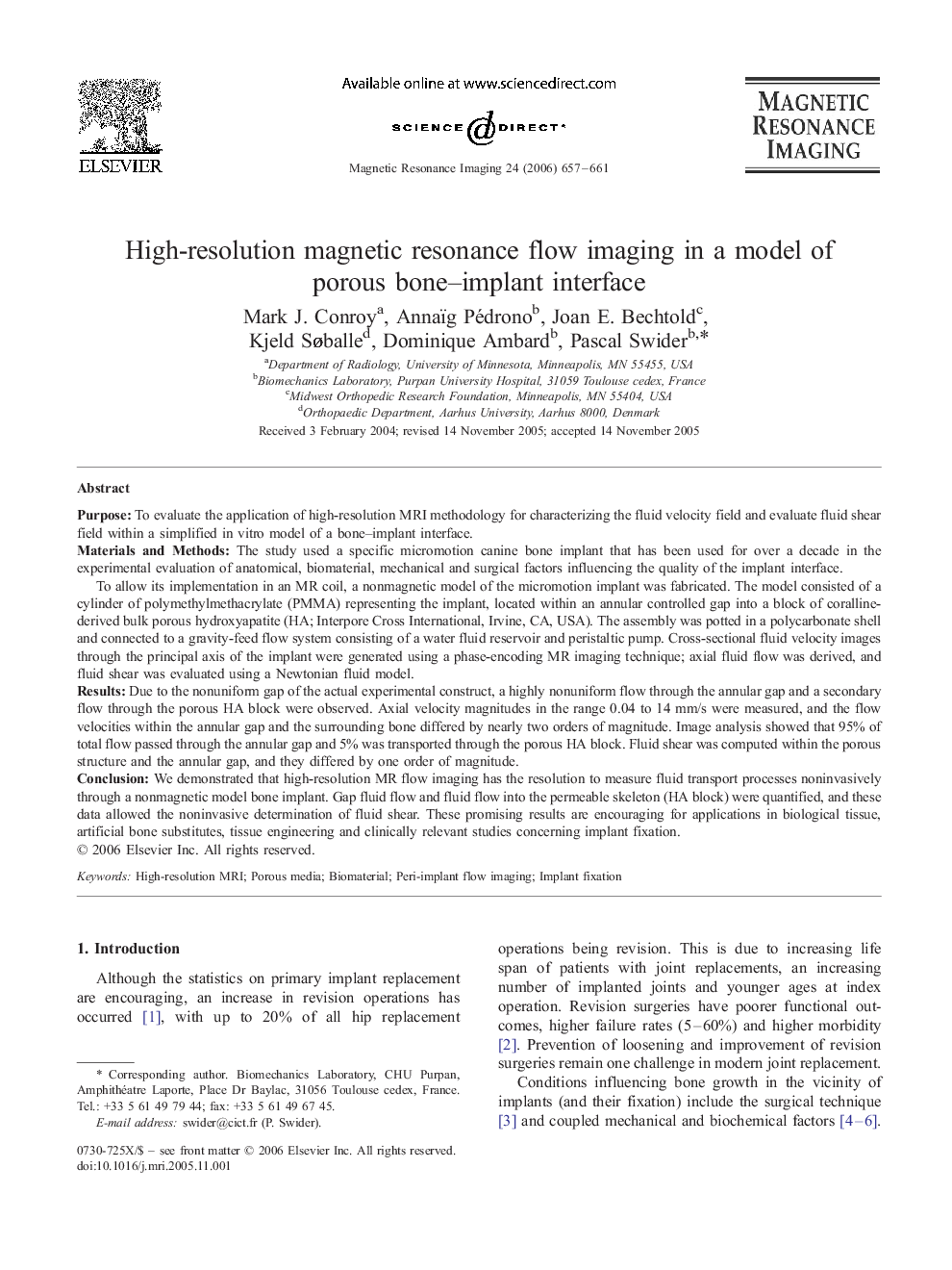| کد مقاله | کد نشریه | سال انتشار | مقاله انگلیسی | نسخه تمام متن |
|---|---|---|---|---|
| 1808040 | 1025307 | 2006 | 5 صفحه PDF | دانلود رایگان |

PurposeTo evaluate the application of high-resolution MRI methodology for characterizing the fluid velocity field and evaluate fluid shear field within a simplified in vitro model of a bone–implant interface.Materials and MethodsThe study used a specific micromotion canine bone implant that has been used for over a decade in the experimental evaluation of anatomical, biomaterial, mechanical and surgical factors influencing the quality of the implant interface.To allow its implementation in an MR coil, a nonmagnetic model of the micromotion implant was fabricated. The model consisted of a cylinder of polymethylmethacrylate (PMMA) representing the implant, located within an annular controlled gap into a block of coralline-derived bulk porous hydroxyapatite (HA; Interpore Cross International, Irvine, CA, USA). The assembly was potted in a polycarbonate shell and connected to a gravity-feed flow system consisting of a water fluid reservoir and peristaltic pump. Cross-sectional fluid velocity images through the principal axis of the implant were generated using a phase-encoding MR imaging technique; axial fluid flow was derived, and fluid shear was evaluated using a Newtonian fluid model.ResultsDue to the nonuniform gap of the actual experimental construct, a highly nonuniform flow through the annular gap and a secondary flow through the porous HA block were observed. Axial velocity magnitudes in the range 0.04 to 14 mm/s were measured, and the flow velocities within the annular gap and the surrounding bone differed by nearly two orders of magnitude. Image analysis showed that 95% of total flow passed through the annular gap and 5% was transported through the porous HA block. Fluid shear was computed within the porous structure and the annular gap, and they differed by one order of magnitude.ConclusionWe demonstrated that high-resolution MR flow imaging has the resolution to measure fluid transport processes noninvasively through a nonmagnetic model bone implant. Gap fluid flow and fluid flow into the permeable skeleton (HA block) were quantified, and these data allowed the noninvasive determination of fluid shear. These promising results are encouraging for applications in biological tissue, artificial bone substitutes, tissue engineering and clinically relevant studies concerning implant fixation.
Journal: Magnetic Resonance Imaging - Volume 24, Issue 5, June 2006, Pages 657–661